The London-based creator has long studied the work of the Old Masters.
To Ashton, portraiture is familiar, running deep as part of our earliest and easiest encounters with art.
That’s why seeing it challenged results in a shocking, unexpected distortion for viewers.
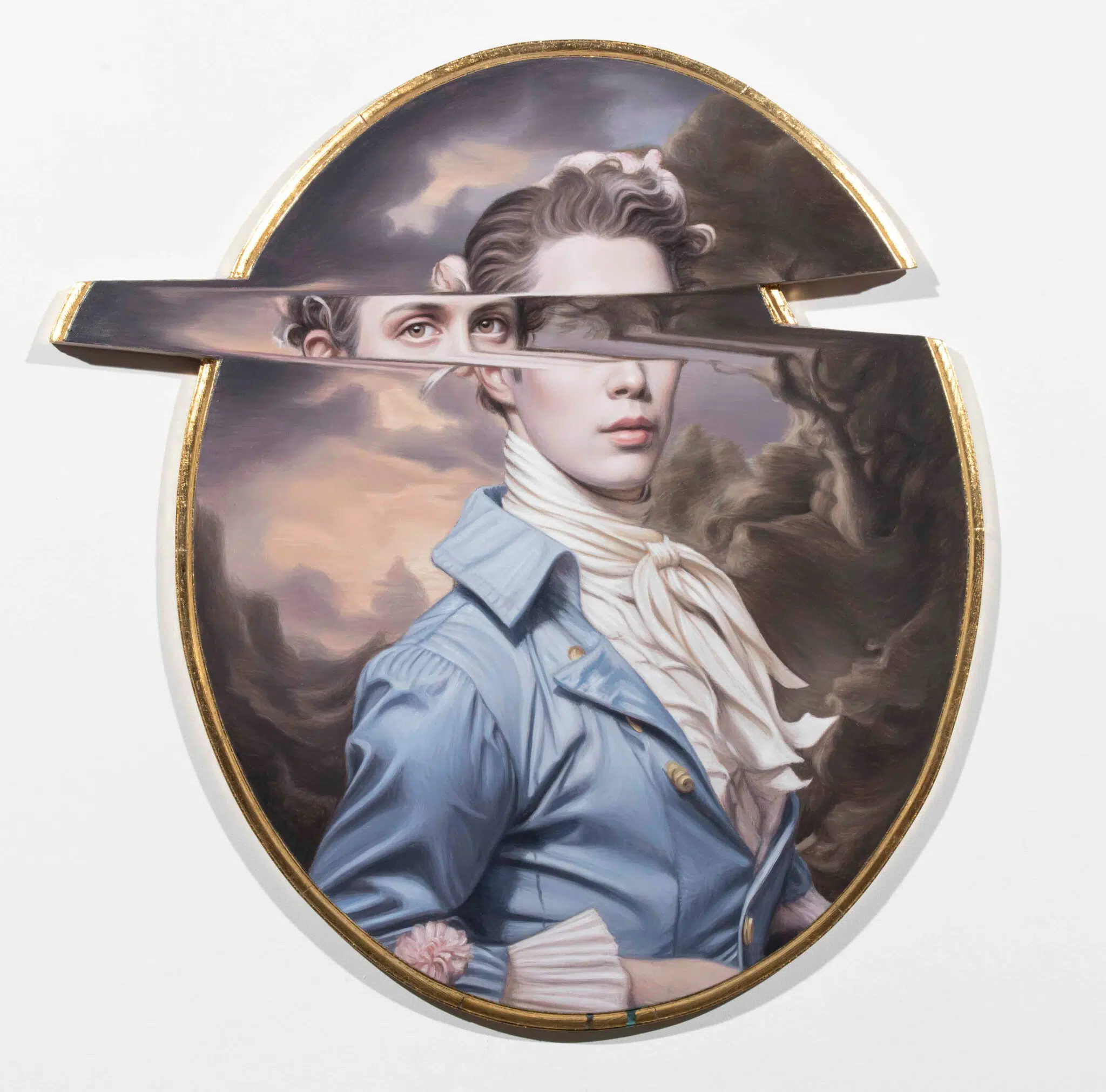
“Or You Could Panic,” 2025
We had the opportunity to talk to the artist about his visual work and process.
Read on for My Modern Met’s interview with Ben Ashton.
Let Them Eat Fake, 2023
How did your painting journey begin?
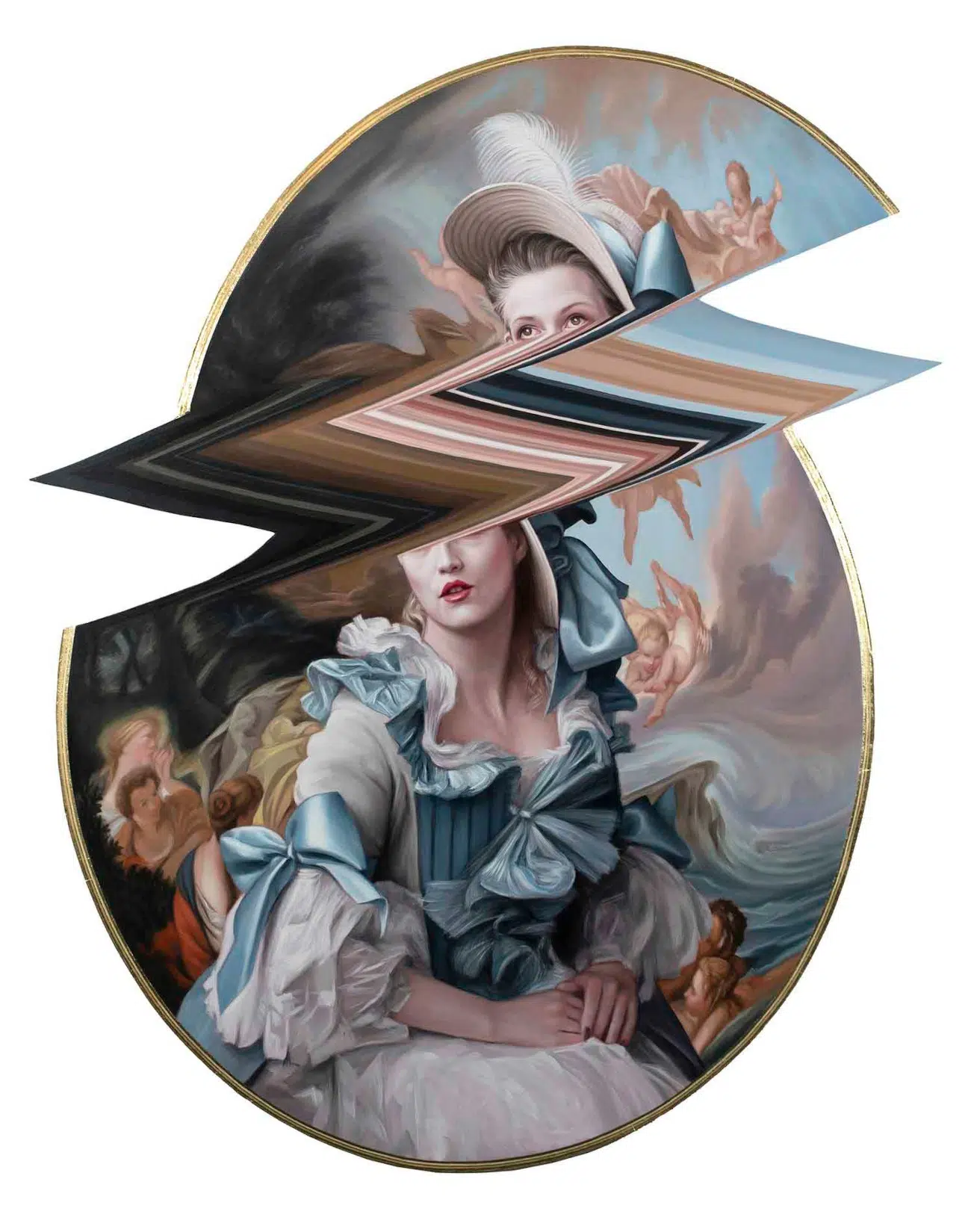
“Let Them Eat Fake,” 2023
It was there that I encountered the work of Caravaggio, the first Old Master I really studied.
I was determined to master the technical foundations before attempting more ambitious work.
That deliberate, foundational approach has shaped everything Ive done since.
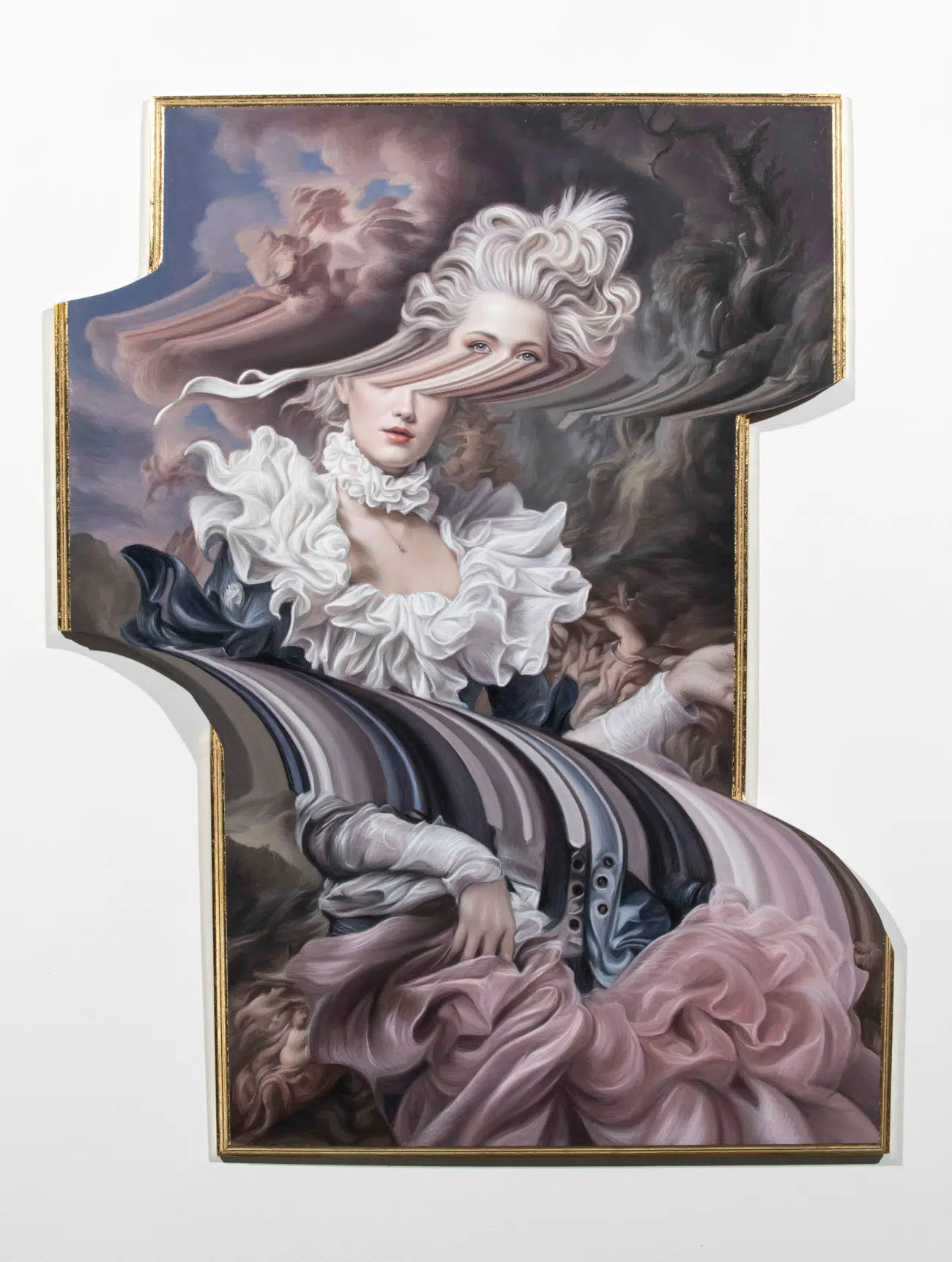
“Or You Could Panic,” 2025
What drew you to traditional portraiture, and what inspired you to distort and experiment with it?
I was drawn to portraiture because of its enduring role in art history and the inherent legacy it conveys.
This vast visual history is a rich source to draw upon, ripe for reinterpretation or subversion.

“FFS,” 2024
After mastering traditional techniques, I found it exhilarating to break the rules I had so painstakingly learned.
This interplay between the familiar and the unsettling is what drives my experimentation.
I first started employing these digital-style distortions as a reaction to Brexit here in the UK.

“Or You Could Panic,” 2025
The public had been convinced to isolate itself through rhetoric of past glories from days of Empire.
FFS, 2024
What does your creative process look like?
I then tend to create characters who become protagonists or anti-heroes in my paintings.
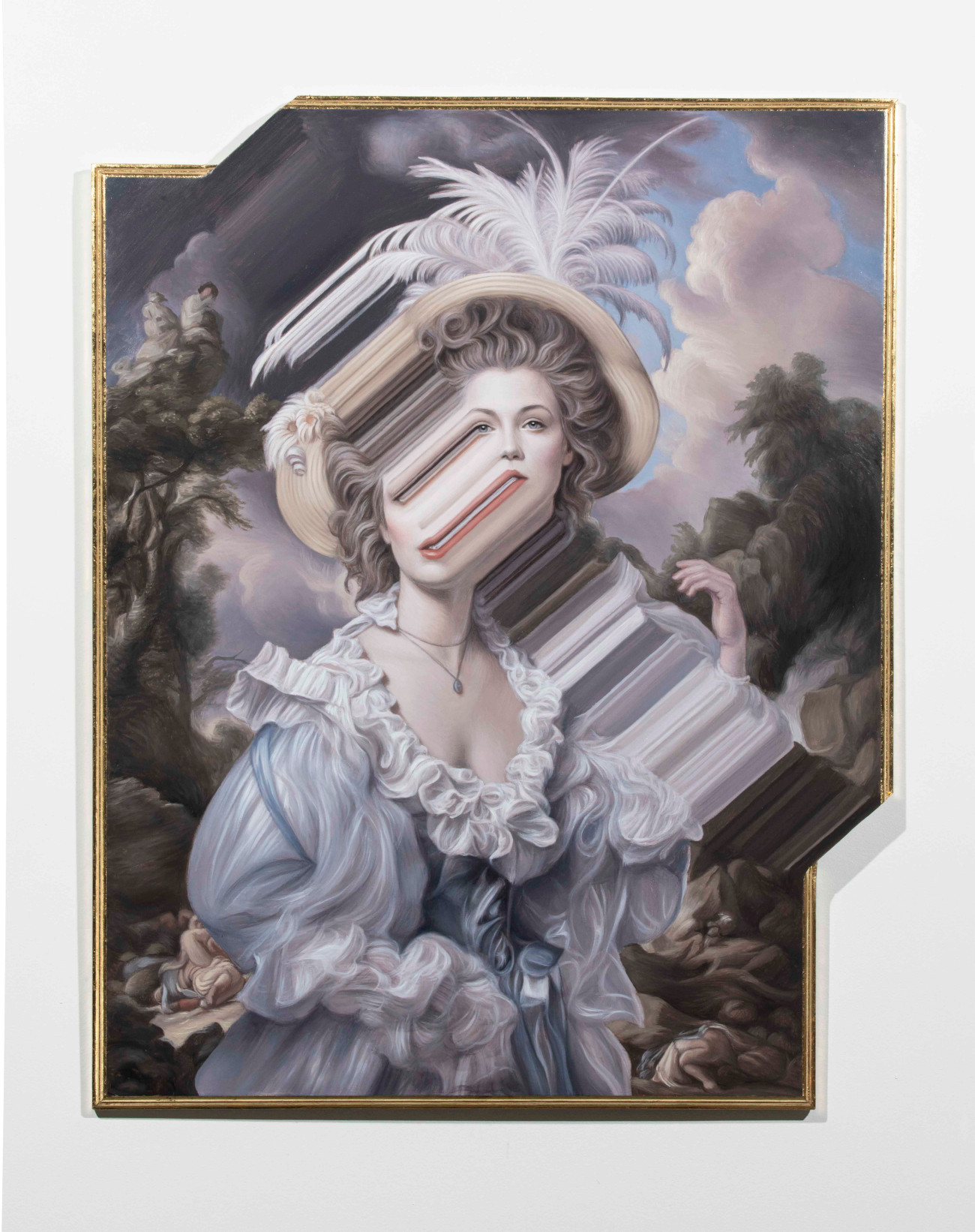
“Or You Could Panic,” 2025
Some of your works have a sculptural elements to them, as their canvases gets equally distorted.
Is there a challenge to this?
In your mind, what comes first, the canvas or the painting?
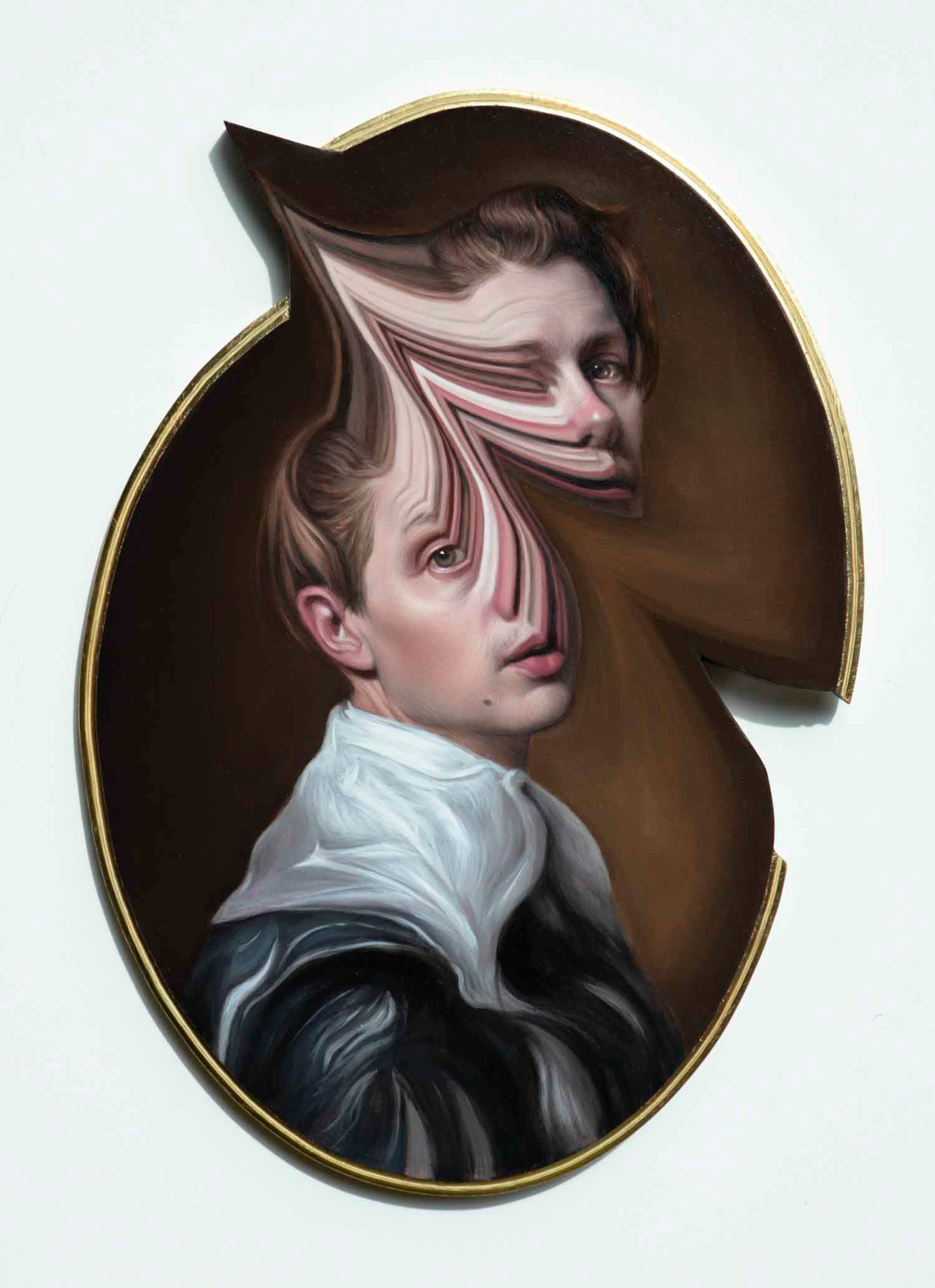
“In Retrospect,” 2024
Ive taught myself a variety of woodworking techniques to hand-cut and shape each panel.
This preparatory work is time-consuming but meditative, preparing me mentally for the painting process.
Drafting the image onto the panel often takes as long as the painting itself.

“Or You Could Panic,” 2025
My drawings are highly detailed, mapping out contours and guiding every mark Ill make with paint.
This precision allows me to be intentional and confident when applying paint, minimizing mistakes.
When I finally get started on painting these pieces, its quite a relief.
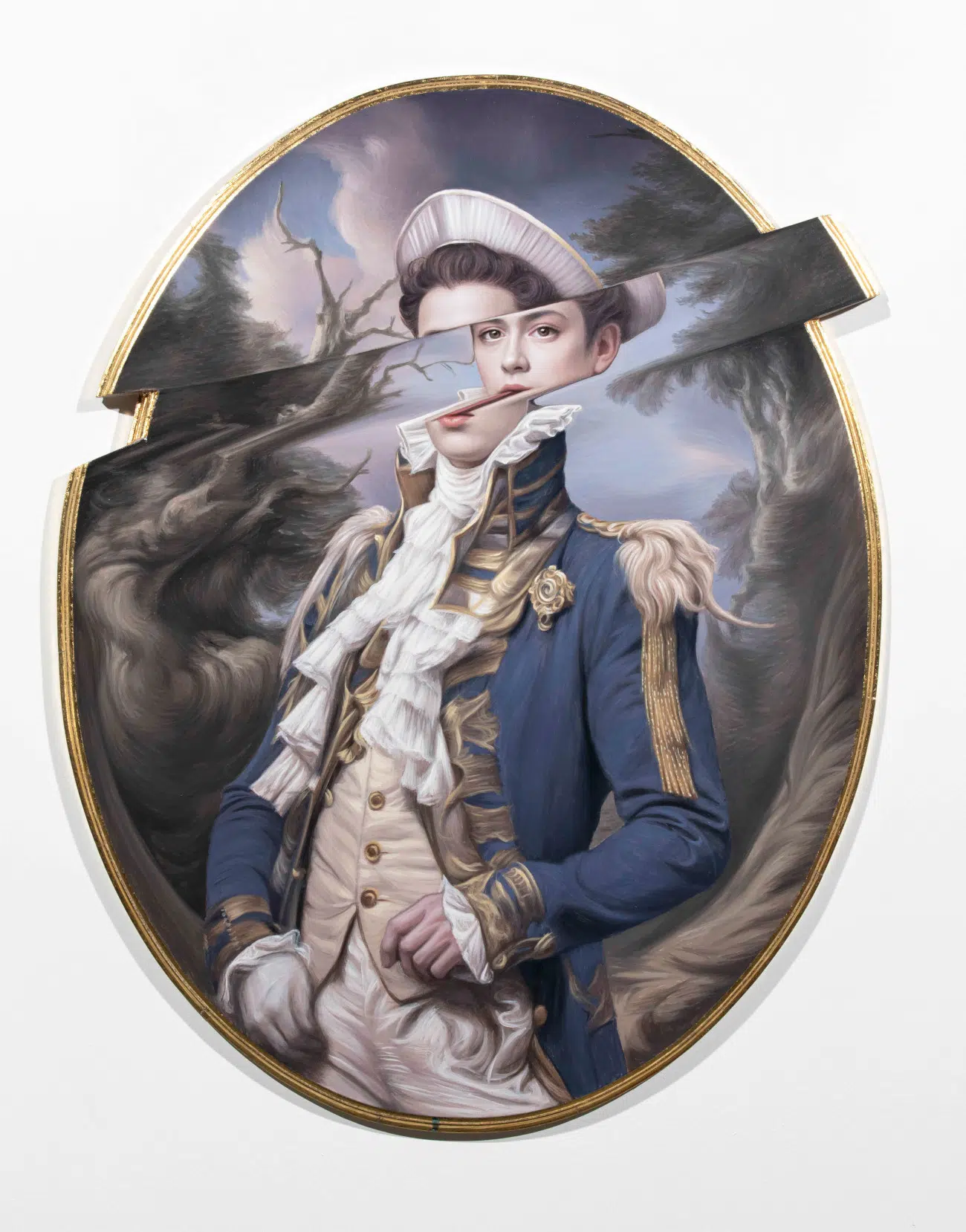
“Or You Could Panic,” 2025
When you start to see the image appearing on the panel, it always feels magical.
This stage shapes the shadows, enhances facial features, and gives elements like eyes their characteristic gloss.
Its a method rooted in Old Master techniques, and one that Ive spent years trying to understand.

“Or You Could Panic,” 2025
Who are the people in your paintings?
Do you work based on existing people or portraits?
However, these werent personal portraitsthey played characters within the narratives of my paintings.

“Or You Could Panic,” 2025
The resulting images are amalgamations of these datasetsnew compositions that blend familiarity with something entirely uncanny.
In Retrospect, 2024
Is there a particular painting you’re most proud of or that is your favorite?
My favorite painting is always my next one.
I try never to look back, focusing instead on improving and pushing myself further.
Once a work is finished, it becomes less significant to meits simply part of my ongoing learning process.
Similarly, the level of detail in the backgrounds of this series surpasses that of my earlier works.
These achievements only make me wonder how I can push even further in the future.
Its this problem-solving that fuels my passion for art and keeps me striving for whats next.
What do you hope people will take away from your art?
I hope people find whatever resonates with them in my work.
Its not important to me that viewers understand my intentions or the reasons behind my choices.
In fact, I find it fascinating when people interpret my work in ways I never anticipated.
As a child, I often walked through galleries reading long artist statements that explained conceptual works.
Social media has wholly transformed the relationship between artists and audiences, allowing for immediate dialogue.
This connection is an essential and rewarding part of my practice.
Can you tell me a bit about your upcoming exhibition in March?
I have a solo exhibition opening March 15, 2025 at the Corey Helford Gallery in Los Angeles.
TitledOr You Could Panic, it will be my largest show to date.
The title reflects my ambivalence toward AI and its growing impact on the art world and on society.
I find myself torn between a sense of urgencyshould we panic?and the futility of such a response.
These works continue my ongoing historical and cultural examination of portraiture, and its place in a contemporary context.
This exhibition pushes the boundaries of traditional painting, combining classical techniques with cutting-edge technology.
I hope it will provoke thought, curiosity, and dialogue among viewers.